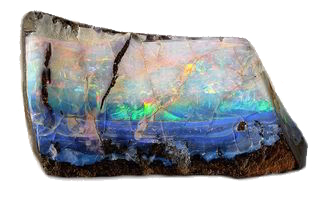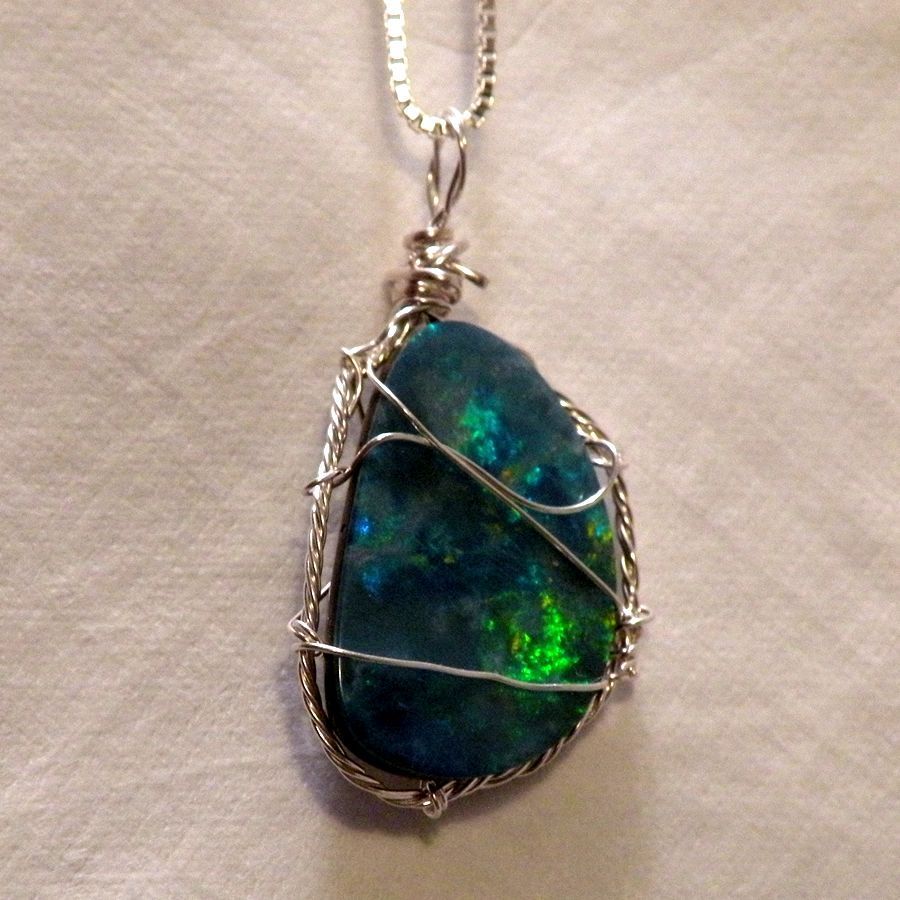

Opals
Opals are among the most fascinating and beautiful stones in the world. Read More

Australia’s opals are the most desirable in the world. Black opal is the best of the best . . .
More ...Opals, it turns out, are rarely sickly white. Like snowflakes, no two opals are identical. Every real opal you buy is a one-of-a-kind piece. Beautiful opal comes from all over the world - and each place produces a different kind of opal. Selecting just one stone can make your head spin!
Opals for jewelry come in four basic forms.
SOLID OPAL: Sometimes an opal layer is thick enough to be cut out of the host rock and cut, shaped and polished separately. Even truly excellent white opal is expensive as a solid piece. Solid Lightning Ridge black opals (from one tiny region in Australia) can be many hundreds of thousands of dollars.
DOUBLETS: A doublet is a slice of opal on a backer. Usually the backer is made of ironstone, the normal host rock in Australia. Sometimes backers are made of onyx or other material. The opal layer is thick enough to give you the depth and play-of-color for which opals are noted. It is also thick enough to chip or crack if mishandled - just as solid opals do.
TRIPLETS: A triplet is essentially an "opal sandwich". It is a slice of opal between a backer layer and a clear upper layer, often made of quartz. A triplet is fully protected from chips, flakes and cracks by being entirely encased in harder materials. Triplet opals may have the play-of-color that is desired, but they look "glassy". It is also very easy to piece opals together in the midst of that sandwich.
IN MATRIX: Most of the world's opals form in thin crevasses between layers of rock. They are not necessarily thick enough to be removed from the host rock nor are they necessarily in continuous "veins". Opals-in-matrix are called various things based on where they come from. In Australia, for example, they're called Yoweh Nuts (roundish) or boulder opal. People love to imagine pictures in the opal against the matrix.
Opals are as much as 15% water. They're are soft stones, so you need to take special care when using them. Whenever possible, surround them with "bumpers" so the edges don't chip. NEVER put them in an ultrasonic cleaner. Wipe them carefully with dish soap and warm water. Use a soft toothbrush on the setting. Wrap your opal jewelry before putting it away rather than simply dropping pieces in your jewelry-box. You'll be able to enjoy your opals for many, many years.
© 2016 Simple Elegance LLC
web development by turbocatalyst